Brown algae in a fish tank can be an eyesore for a hobbyist. So you may wonder, “Is it good or bad for fish?”
Generally, brown algae are not good for fish tanks. It does not harm fish if you keep it under control. Many fish eat brown algae occasionally. But, if you fail to control brown algae in a fish tank, your tank will look less appealing.
Now that you have learned the short answer, learn more about brown algae, whether it is harmful to fish, and the best way to remove them from your aquarium.

Table of Contents
What Is Brown Algae?
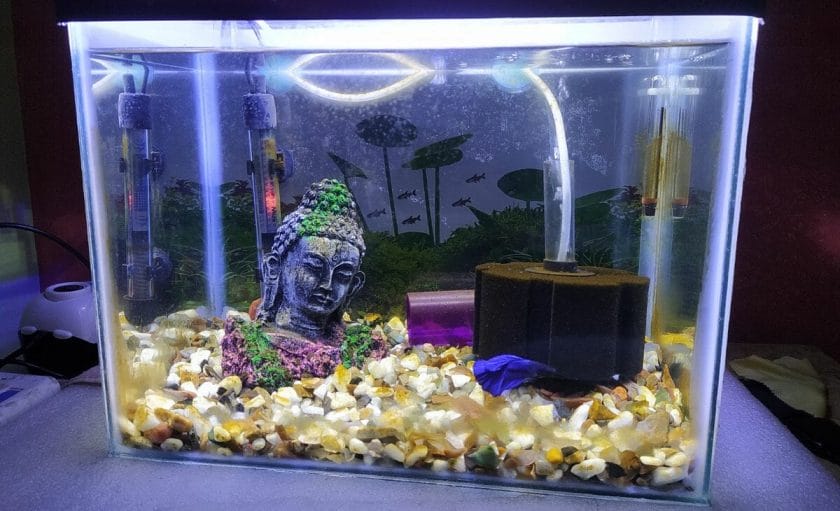
Although many authorities argue that brown algae are not algae but diatoms, the truth is that they are photosynthesizing algae common in water bodies.
Brown algae is a common name for the diatoms that hobbyists usually find in a new aquarium. These diatoms occur in aquatic environments, such as freshwater, saltwater, and moist soil.
Brown algae or diatoms are unicellular organisms that exist solitarily or in colonies. They also photosynthesize light into energy like your regular aquarium plants or any other algae.
Under the scrutiny of a microscope, each brown algae species creates a distinct, and beautiful opal-like crystalline around its cell wall that appears like snowflakes.
Is Brown Algae Good or Bad For Fish Tank?
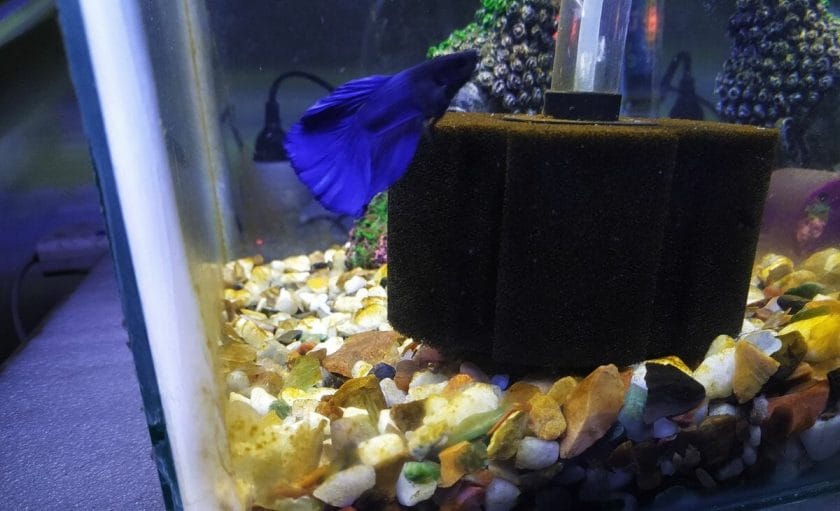
Generally speaking, brown algae is not harmful to your fish if you keep them under control.
You may find in your fish-keeping experience that some fish eat brown algae. Some notable species include the Otocinclus catfish, plecos, and the Suckermouth fish.
Some fish keepers argue that keeping algae-eating fish is a great way to rid your aquarium of brown algae. I wouldn’t count on that if keeping algae-eating fish only, is your way to control brown algae in a fish tank. You need more than that.
However, brown algae are not generally good for your fish tank because they give your tank a less appealing look.
Unlike blue-green algae, which usually build up in large slimy sheets that stick together, brown algae do not stick together. Brown algae are typically filamentous, and these filaments drift randomly in the tank.
Hence, patches of brown algae will make it challenging for your tank to look appealing.
What Causes Brown Algae in Fish Tanks?
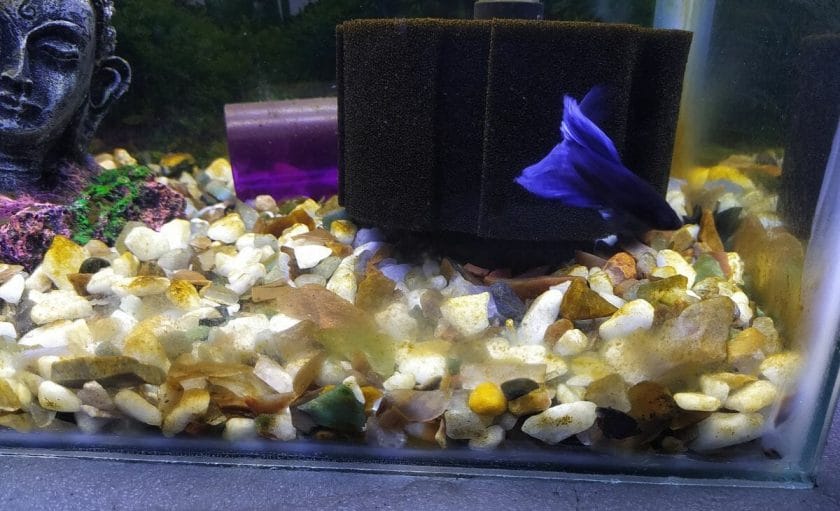
Here are a few reasons why you have brown algae in your aquarium.
Cycling Stage
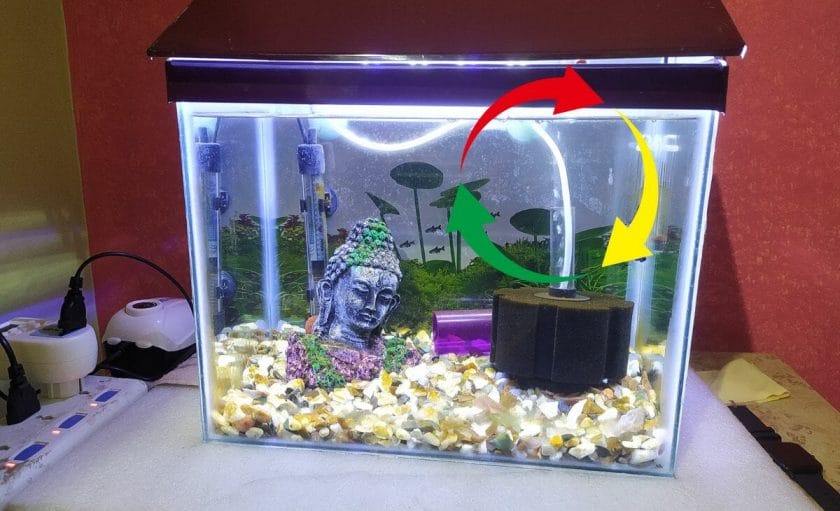
Brown algae is a usual occurrence in a tank that is not yet mature.
When the tank is in its cycling stage, you can expect it to have brown algae. The reason is simple; it is a newly set up aquarium without plants, and green algae to compete for the nutrients that the diatoms feed on.
Excess Silica and Other Nutrients in the Tank’s Water
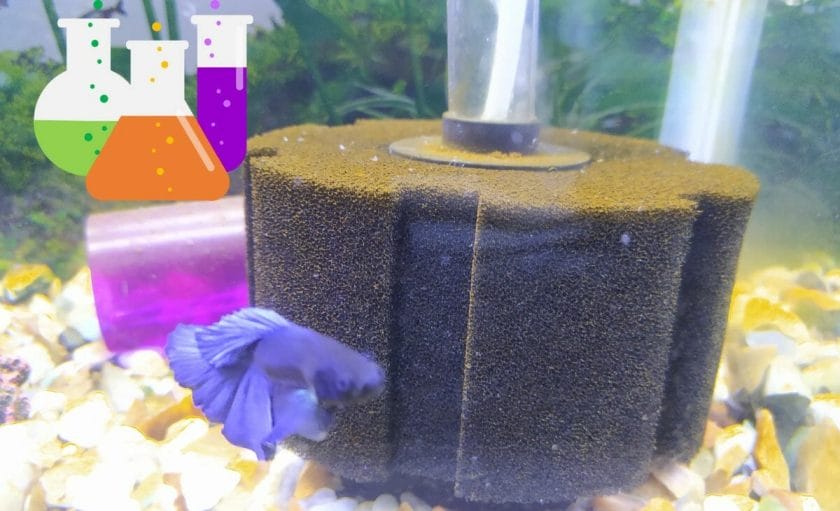
Excess silica, and other nutrients, such as phosphates, are responsible for the growth, and bloom of brown algae in your aquarium.
If your tap water source is rich in silicic acid, a silica build-up in your tank is inevitable. Silica can also leach from some types of substrates.
Silica sand is a good example of a substrate that can contribute to a silica build-up in your aquarium water.
Besides silicates, another nutrient that can spur the brown algae to bloom in your tank is excess phosphates. Phosphates are the natural product of waste breakdown in the tank.
Brown algae thrive on phosphates in the water; unfortunately, many tap water sources in cities are extremely high in phosphates.
These two nutrients in your aquarium water could be the reason for the brown algae bloom in your tank.
Excess Nitrate

Excess nitrates could also be the reason for the brown algae in your aquarium.
Nitrates are the natural breakdown of waste matter in your aquarium water. These wastes include fish waste, uneaten fish food, decaying plants, and other dead materials.
If you have an overpopulated tank, the increase in the fish waste can also affect how much nitrate your tank ends up with in the long run.
Like phosphates, and silica, brown algae flourish on abundant nitrates. Hence, this may be why you have brown algae in your tank.
Improper Lighting

Brown algae in your tank may also be the result of improper lighting. A fish tank kept in the dark, or a dimly lit place is more likely to develop brown algae than a fish tank that receives adequate lighting.
This is because when the fish tank is exposed to adequate lighting, green algae and plants that grow in bright lights will compete for the nutrients that the diatoms need to thrive.
Hence, leaving your aquarium in the basement or other dark corners of the house may not be the best, especially for an aquarium undergoing its cycling stage.
How To Remove Brown Algae From Your Fish Tank
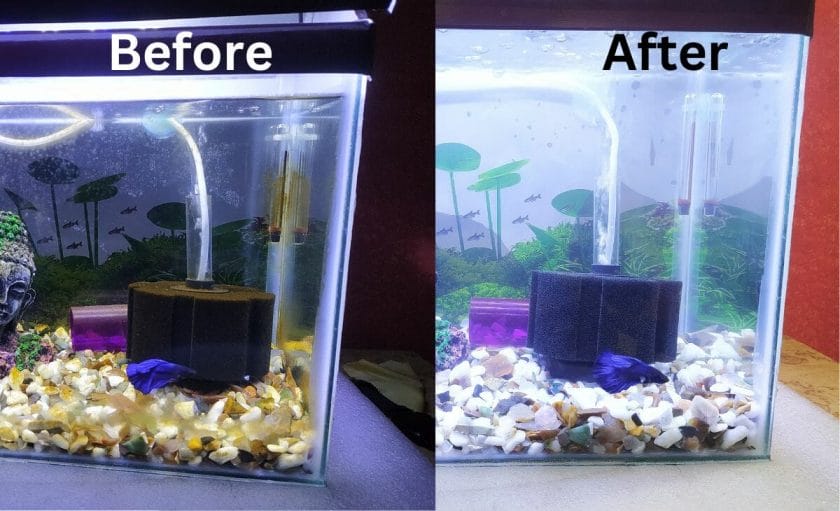
Ordinarily, brown algae occur mostly during the cycling stage of a new tank.
It usually diminishes as the tank matures because of the competition for nitrates, and phosphates by plants, and green algae in your tank.
However, if you need to remove brown algae from your tank, here is a simple, and effective way.
Since diatoms usually rest at the bottom, you need to wipe off every affected tank decoration. Wipe all the surfaces of the aquarium, and vacuum the substrates.
Getting the brown algae out of your substrate will probably be the hardest part. But you can remove as much as possible by vacuuming your substrate with a siphon. Vacuuming also reduces the chances of brown algae growth for a long time.
You do not need any chemical product to remove to soak your tank decorations or any water-bleach solution to clean your tank decorations. These chemical products are generally unsafe, and the margin of error is too slim to make them safe.
While they are designed for fish to tolerate, sadly, not all fish tolerate them.
Hence, using these harsh chemical products can lead to more problems in the tank. It would be best to avoid introducing chemicals into your tank to get rid of brown algae.
Other things you can do to prevent or control brown algae growth in your aquarium are:
Add Live Plants
Add plants to your aquarium to compete with the brown algae for the nutrients in the water.
Some freshwater aquarium plants you can use include the Anubias, Cryptocoryne Beckettii, Java ferns, and Java moss.
Increase Aquarium Light Time
Increase how much light your aquarium gets every day. Ensure that your aquarium gets at least 8 hours of light every day.
Use Silicate Absorbing Resin In Your Aquarium Filters
You can also use special silicate absorbing resins in your aquarium filters, especially if it is a new aquarium. These filters absorb silicates, and phosphates to starve the brown algae.
You can try the Seachem PhosBond Phosphate Silicate Remover or the Seachem PhosNet Synthetic GFO – Phosphate & Silicate Remover.
Reduce Aquarium Waste
Reduce waste by removing uneaten food, and decaying matter from the tank as soon as possible.
You can also avoid overstocking to prevent high fish waste production. This will starve brown algae of nitrates, and phosphates for growth.
Perform Regular Water Change
Perform regular water changes, and water parameter testing to ensure optimal water chemistry.
Water changes generally prevent spikes in nitrates level, and other issues that may make aquarium water conducive to brown algae bloom.
FAQ

Do Fish Eat Brown Algae?
Fish eat brown algae in the tank. The Otocinclus catfish, Bristlenose pleco, Siamese algae eater, Blue Caribbean tangs, and Foxface rabbitfish are good examples.
But you cannot count on fish to eat all your brown algae. Follow the tips above to remove, and prevent brown algae bloom in your tank.
What Kills Brown Algae?
Performing water changes regularly is the most effective way to eliminate brown algae in your aquarium.
The frequent water changes starve the brown algae by removing the nitrates, phosphates, and other nutrients that the brown algae need to survive.
Conclusion
So while brown algae are not harmful to fish, you want to keep them under control. Naturally, the brown algae will disappear with time as the tank matures.
Avoid the causes of brown algae by looking up the tips discussed above.
Follow the simple removal method discussed above instead of introducing harsh chemicals that will lead to problems with your water chemistry, and threaten the health of your fish.
The tips and recommendations above are guaranteed to help you give your fish a beautiful ecosystem to live a healthy and fulfilling life.